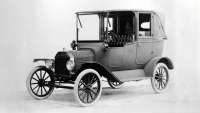So, how many cars in Australia? More than 21 million, according to the latest publicly available federal government figures … but for even more interesting facts around this topic, read on.
If you’ve ever pondered the nation’s most crucial issues such as How many cars are in Australia? Don’t worry, you’re not alone.
So, how many cars are there in Australia in 2023? Or, more accurately, how many registered cars in Australia?
Turns out the most reliable way to figure out the total number of motor vehicles* in Australia is to use the most recently available motor vehicle registration data sets.
*The term ‘motor vehicles’, as used by the Bureau of Infrastructure and Transport Research Economics (BITRE), encompasses everything from motorcycles, passenger vehicles, campervans, and light commercial vehicles through to heavy rigid trucks, articulated trucks and buses.
There were 21.2 million registered motor vehicles on 31 January 2023 – an increase of approximately 2.3 per cent between January 2022 and January 2023, according to BITRE.
Note: These figures used to be available through the Australian Bureau of Statistics (ABS) as part of the ABS motor vehicle census, but that was discontinued in 2022 and replaced by the report we are citing throughout this feature.
This report presents Bureau of Infrastructure and Transport Research Economics’ (BITRE) estimates of the number of registered motor vehicles in Australia on 31 January 2023.
.jpg)
It is the second issue of BITRE’s annual statistical release, and is intended as a replacement for the ABS Motor Vehicle Census (MVC), discontinued in 2022.
This report provides aggregate estimates of the number of vehicles on register by state and territory, vehicle type, fuel type, vehicle make and vehicle age.
The report also includes estimates of battery electric vehicles (BEVs), fuel-cell electric vehicles (FCEVs) and hybrid electric vehicles (HEVs) in the fleet.
How is this number determined? The BITRE report is compiled based on existing motor vehicle registrations data from all states and territories.
Are there multiple ways of quantifying how many cars are in Australia (e.g., number sold, number registered, number per household, amount on the road, etc)?
Sure, why don’t you put a camp chair beside the road and count every vehicle yourself? But that wouldn’t be accurate either because it’s a sure bet there are a lot more than the 21.2 million registered motor vehicles in the country, but there’s no official up-to-date record of these as they’re near-impossible to keep track of because they’re either mothballed in a shed somewhere, busy rusting in someone’s front yard, or perhaps remaining unregistered and yet still being driven illegally.

How has the number of cars in Australia changed over time?
According to ABS and BITRE figures, the total number of registered vehicles in Australia increased from 20,267,832 in 2021 to 20,687,047 in 2022 and 21,168,462 in 2023.
“Passenger vehicles remain the largest vehicle type on register, with 15.3 million registered vehicles on 31 January 2023, an increase of 1.8 per cent over the number of registered passenger vehicles on 31 January 2022,” BITRE states in the report.
So, the numbers are increasing year on year.

How does the number of cars differ from state to state in Australia? Which has the most and least?
In the 2023 report, NSW had the most registered motor vehicles (6,154,814) and the Northern Territory had the fewest (166,110). Queensland had 4,598,755 registered motor vehicles in 2023; South Australia and Western Australia had 1,556,185 and 2,437,785, respectively. Tasmania had 532,142 registered motor vehicles, while the ACT had 331,416.
How many cars in Victoria? There were 5,391,255 registered motor vehicles in Victoria in 2023.
The number of registered vehicles increased across every state and territory between 31 January 2022 and 31 January 2023.
Queensland, Western Australia and Tasmania experienced the largest proportionate increases in vehicle registrations, 3.0 per cent, 2.9 per cent and 2.3 per cent, respectively.
New South Wales, Victoria and Queensland have the highest number of vehicle registrations, and together account for more than 76 per cent of all registered motor vehicles.
The Northern Territory vehicle fleet grew slowest, by 0.9 per cent between 31 January 2022 and 31 January 2023.
.jpg)
How is the number of cars in Australia predicted to change or stay the same in the future?
According to ABS and BITRE figures, the total number of registered vehicles in Australia increased from 20,267,832 in 2021 to 20,687,047 in 2022 to 21,168,462 in 2023.
So, if we regard this report as a true reflection of what’s going on in terms of the number of vehicles being registered in Australia, then we can reasonably expect that figure to climb again year on year.
.jpg)

.jpg)
.jpg)


.jpg)
.jpg)

.jpg)








_0.jpg)



